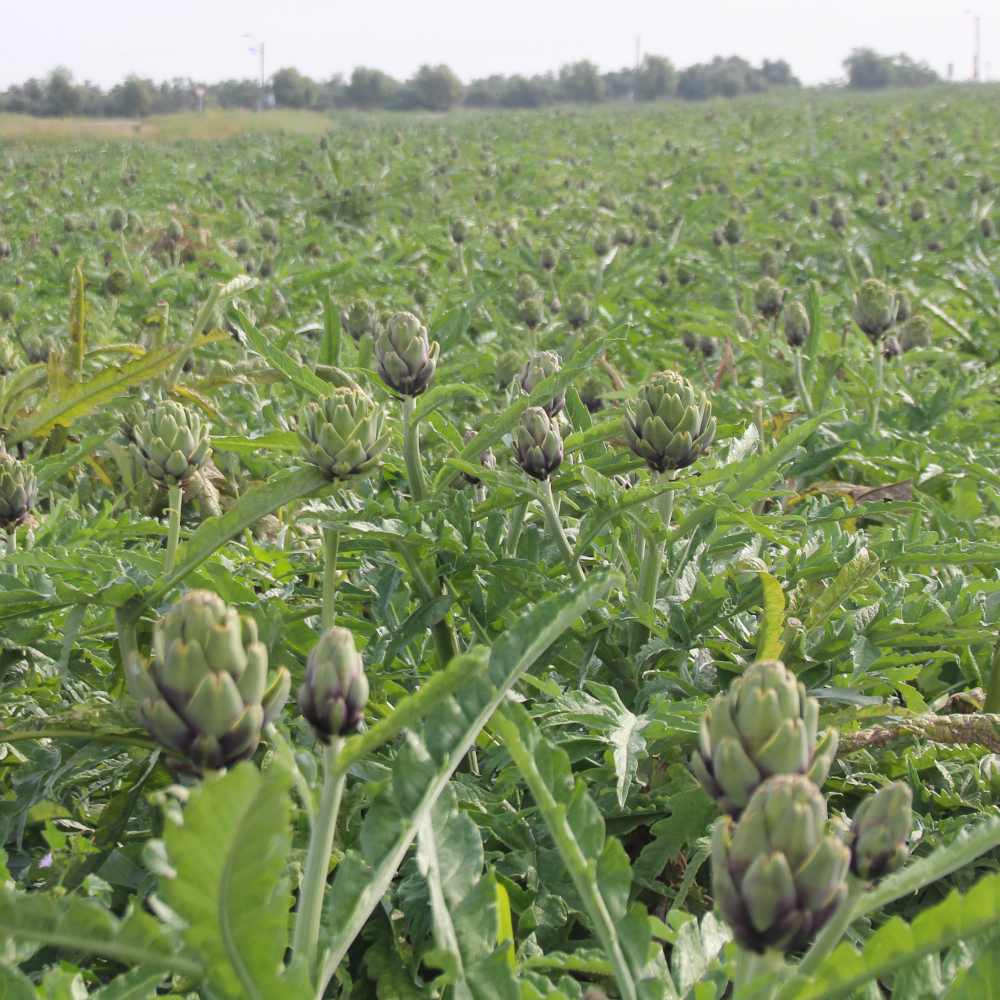Cardoon Seeds
The cardoon is a very popular ingredient in Mediterranean style cooking, where it is native and has been cultivated since ancient times. However, cardoons are considered a weed in Australia and California because of its invasive nature and adaptability to dry climates.
In Portugal, cardoons are used as a vegetarian source of enzymes for cheese production, which gives the cheese a distinct earthy and herbaceous taste.
Cardoons are only edible when cooked. To cook cardoons, trim off any leaves or thorns, and peel the stalks with a vegetable peeler to remove the indigestible fibers.
Cardoons discolor when cut; place cut pieces in cold water with lemon juice to keep them from turning brown.
Cardoons can be braised, sautéed, boiled in soups and stews, or dipped in batter and deep fried. Depending on the age of the stalks, they can take up to an hour to get soft and tender enough to eat.
Growing info: Start indoors in late January or early February; sow seeds in 4 inch pots filled with sterile seedling mix. Sow heavily and expect 65% germination.
Of these seedlings, about 20% will not produce high quality plants. Cull out the small and albino plants. Fertilize transplants with a good all purpose liquid fertilizer such as Earth Juice Grow 2-1-1.
Transplant after the danger of frost has passed, but when the seedlings can still receive 10-12 days of temperatures under 50°F, which induces earlier budding. The period of cool temperatures needed to stimulate growth and flowering varies with location and variety. Space transplants 3 feet apart in rows 3 feet apart. Work in 1 cup of our complete fertilizer or a shovelful of composted chicken manure per plant.
After the first year's harvest, remove off-types and less vigorous plants leaving a final spacing of 5-6 feet between plants. In late October, cut plants to about 8-10 inches above ground and cover with straw or leaves to keep the stump from freezing. Uncover in early April. Overwinter survival is likely but not certain. Regrowth will be offshoots of the parent plants.
Harvest: Cut flowers before they start to open. The smaller, immature artichokes are the most tender. Rub the cut 'chokes with a slice of lemon to prevent discoloration. Cardoon can be harvested green or blanched white by wrapping the young stalks with newspaper or piling straw around the plants for 30 days prior to harvest. Store at 36°F and 100% relative humidity.
Note: If you order this seed, you may want to print out the sowing instructions above as sowing instructions are not on seed packet.

A compound found in the leaves of Artichoke Thistle is called cynarin. Cynarin improves the function of both the liver and the gall bladder. It stimulates digestive juices and helps to lower cholesterol. The stems of Cardoon are blanched and used like celery, and the young, tender leaves can be eaten raw or cooked.
Produces magnificent flowerheads that can be cut and dried for arrangements. Edible leaf stalks and midribs are tasty when blanched. Unopened flowerheads can be eaten like artichokes.

